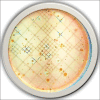Evaluation of effects of essential oil vapors on the bacterial count in bioaerosols
- PMID: 37082083
- PMCID: PMC10112105
- DOI: 10.4103/jomfp.jomfp_279_21
Evaluation of effects of essential oil vapors on the bacterial count in bioaerosols
Abstract
Background: The aerosols generated during dental treatments contain bacteria and other microorganisms that penetrate the body through the respiratory system of dental surgeons and cause infectious diseases. Several studies have been done to reduce these hazards. The aim of the present study is to evaluate the effects of the plant extract essential oil (EO) vapors of Neem, Clove, Cinnamon bark, Thyme, Lemon Grass, and Eucalyptus on the bacterial count in bioaerosols near dental units.
Materials and methods: Sampling was taken on nutrient blood agar plates by placing them open near dental units using passive air sampling method, before commencement of treatment for 1 h, during treatments for 2 h, and after introducing EO vapors for 2 h. The collected samples were taken for incubation at 37°C for 48 h. The colonies formed were counted in colony-forming units per cubic meter and taken for statistical analysis.
Results: After comparing the obtained results, it was found that there was a significant reduction (P < 0.05) in the bacterial count for about 43% near the dental units after the introduction of the EO vapours.
Conclusion: It is concluded that natural extracts like EOs can reduce bacterial contamination near dental units in the vapourized state, thereby reducing the health hazards in Dental Health Professionals.
Keywords: Bioaerosols; dental units; essential oil vapors; index of bacterial air contamination; passive air sampling.
Copyright: © 2022 Journal of Oral and Maxillofacial Pathology.
Conflict of interest statement
There are no conflicts of interest.
Figures





Similar articles
-
A study to assess the microbial profile and index of microbial air contamination in dental operatories.Indian J Dent Res. 2020 May-Jun;31(3):465-469. doi: 10.4103/ijdr.IJDR_707_18. Indian J Dent Res. 2020. PMID: 32769284
-
Interventions to reduce contaminated aerosols produced during dental procedures for preventing infectious diseases.Cochrane Database Syst Rev. 2020 Oct 12;10(10):CD013686. doi: 10.1002/14651858.CD013686.pub2. Cochrane Database Syst Rev. 2020. PMID: 33047816 Free PMC article.
-
A pilot study of bioaerosol reduction using an air cleaning system during dental procedures.Br Dent J. 2010 Oct 23;209(8):E14. doi: 10.1038/sj.bdj.2010.975. Epub 2010 Oct 15. Br Dent J. 2010. PMID: 20953167 Free PMC article.
-
Antibacterial activity evaluation of selected essential oils in liquid and vapor phase on respiratory tract pathogens.BMC Complement Altern Med. 2018 Jul 27;18(1):227. doi: 10.1186/s12906-018-2291-9. BMC Complement Altern Med. 2018. PMID: 30053847 Free PMC article.
-
Essential oils, their therapeutic properties, and implication in dentistry: A review.J Int Soc Prev Community Dent. 2015 Sep-Oct;5(5):335-40. doi: 10.4103/2231-0762.165933. J Int Soc Prev Community Dent. 2015. PMID: 26539382 Free PMC article. Review.
Cited by
-
Eco-Friendly Sanitization of Indoor Environments: Effectiveness of Thyme Essential Oil in Controlling Bioaerosol Levels and Disinfecting Surfaces.BioTech (Basel). 2024 Apr 26;13(2):12. doi: 10.3390/biotech13020012. BioTech (Basel). 2024. PMID: 38804294 Free PMC article.
References
-
- Manarte-Monteiro P, Carvalho A, Pina C, Oliveira H, Manso MC. Air quality assessment during dental practice: Aerosols bacterial counts in an universitary clinic. Rev Port Estomatol Med Dent Cir Maxilofac. 2013;54:2–7.
-
- Micik RE, Miller RL, Mazzarella MA, Ryge G. Studies on dental aerobiology. I. Bacterial aerosols generated during dental procedures. J Dent Res. 1969;48:49–56. - PubMed
LinkOut - more resources
Full Text Sources
